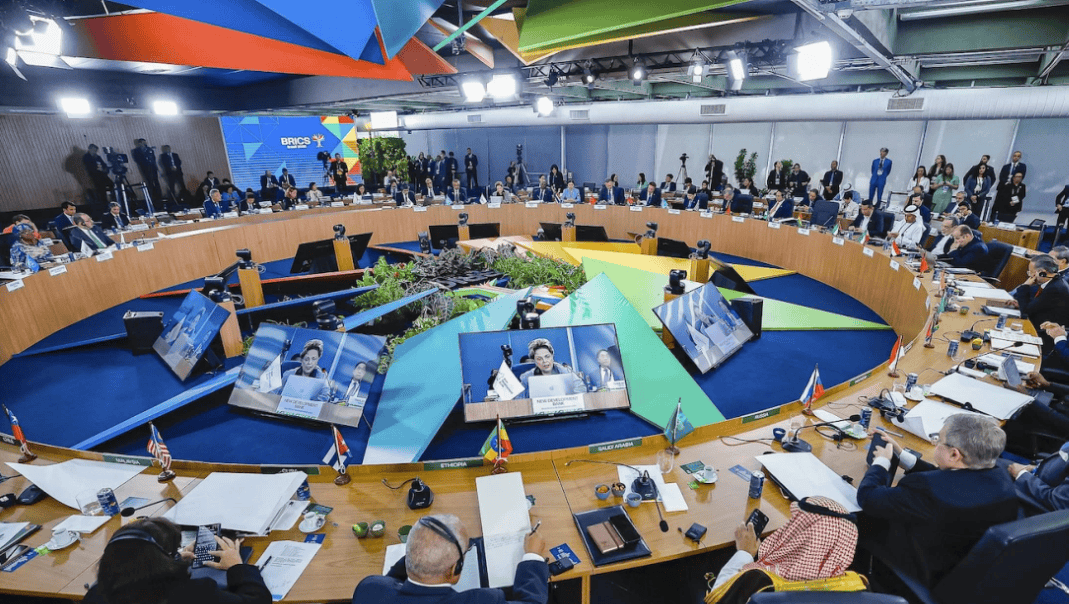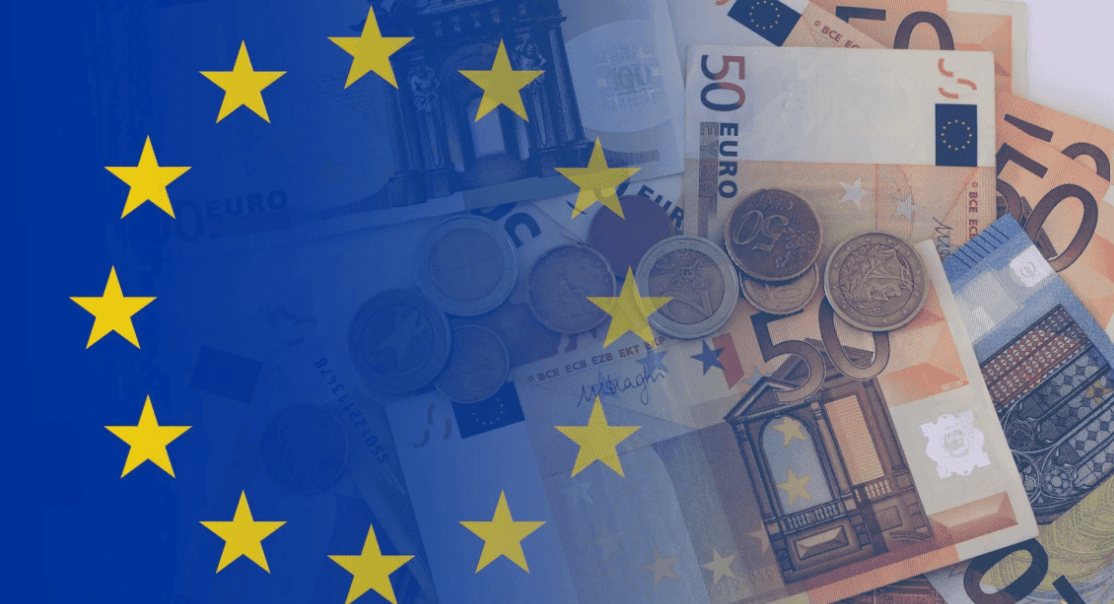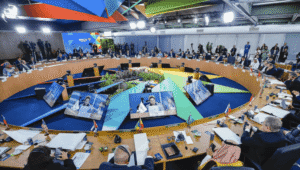The mounting geopolitical threats make the EU governments’ holding on to national defence policies increasingly outdated. Defence fulfils the standard properties of a public good, being non-excludable and non-rivalrous, and qualifies as a European public good given the increasing returns-to-scale and positive externalities. As such, a common defence can be classified along two dimensions: delivery and financing. Delivering will require the development of a fully-fledged European defence industry. Financing entails a substantial reorientation of the EU budget or the setting up of a common fund outside the EU budget.
Following the Russian invasion of Ukraine and other geopolitical developments, including more uncertainty about the NATO commitment to protect EU countries, 1 defence is high on the EU political agenda, after a long period in which investment in defence had a low priority. For many EU countries, rebuilding defence capabilities will require a substantial sacrifice of resources at a time when spending on the energy transition and ageing are rising. The danger of falling short of what is needed is particularly large when defence investment decisions are taken in an uncoordinated way potentially leading to duplications and omissions at the same time. Of course, most EU countries are NATO members, but in practice much of the allocation of resources devoted to defence is uncoordinated across NATO members. Hence, there are potential efficiency gains from defence integration, under the condition that assets that are replaced as duplicates are available for everyone’s defence.
This suggests that there may be a benefit to lift (part of) defence to the level of the EU. So the question is to what extent defence is a European public good (EPG). What are the trade-offs involved in shifting defence policy to the EU level? The theory of fiscal federalism provides leads for such a decision. Wyplosz (2024) applies the theory to EPGs. Arguments in favour of providing a public good at the EU level are increasing returns-to-scale and positive externalities. Arguments in favour of providing a public good at the national or local level are linked to subsidiarity, although preferences are endogenous and may change depending to circumstances.
So, how does defence stack up against these considerations? First, one needs to realise that defence qualifies as a public good. As argued by Buti et al. (2023), it fulfils the standard properties of a public good, being non-excludable and non-rivalrous. The question is at which level to allocate defence policy. Generally speaking, the security of an individual EU country is in large part driven by the security of the other Member States assuming that the EU would operate as a bloc defending its territory. If the latter is not the case, an external perpetrator could take on individual countries at a time. Assuming the EU would operate as a bloc, strengthening the defence of country X would enhance the safety of country Y, and vice versa.
There is more to this, however. Simply raising national defence spending will not automatically strengthen the military capacity of the EU, but increase the risk of wasting resources (e.g. Marsh et al. 2024, López Vicente et al. 2024). In the words of Draghi (2024: 3), “The defence industry is too fragmented, hindering its ability to produce at scale, and it suffers from a lack of standardisation and interoperability of equipment, weakening Europe’s ability to act as a cohesive power.” Economies of scale may arise from the fact that safety from perpetrators grows disproportionally with the strength of the defence. There are likely differences in the perception of the war threats. Assuming that the greatest danger comes from Russia, some countries feel more threatened than others. It is no surprise that the Baltic states are investing more heavily in their armies than, say, Spain. It is also no surprise that Finland is actively preparing its citizens for war, unlike countries further to the west. However, when it comes to the desirability of safety as such, there is little reason to assume that preferences differ fundamentally and, in any case, there would remain objective advantages of scale arising from avoiding duplication. All else equal, even when differences exist in the amount of spending in defence between European countries (as they might exist between regions within a country), for any level of spending there must be efficiency gains by combining forces. It comes to no surprise, therefore, that both observational (see Beetsma et al. 2024 for a review) and experimental evidence (Nicoli et al. 2024) points at strong levels of support for joint defence.
Financing and delivery
EPGs can be classified along two dimensions: delivery and financing (Buti and Papacostantinou 2022). Delivery can be at the national level or the EU, and the same for the financing of EPGs. The two-dimensional classification for defence as an EPG is shown in Table 1. An example of EU level delivery is the joint procurement of ammunition and defence capabilities (Nicoli and Beetsma 2024, Steinbach and Wolff 2024). Obviously, this does not mean that countries come to the Commission buildings to pick up their delivery. EU delivery refers to EU-level governance and decisions about the composition and allocation of the procurement. National-level financing could be incentivised through the new EU fiscal rules. 2 However, in view of the positive externalities of spending on defence, this would lead to an under-provision, unless there is some explicit coordination to jointly increase spending beyond what would be seen as individually optimal. There are two broad modes of EU-level financing. One is through a dedicated fund or facility. To countries sceptical about further EU financial integration this would be relatively attractive, as the total amount going into the fund as well as how long it will exist can be pre-agreed. A possibility is to follow the example of NextGenerationEU and debt-finance it, which makes sense in view of the fact that future generations benefit from such investment in security. The other, more far-reaching option, is to include EU-level defence financing directly in the EU budget. This would better secure the sustainability of financing and it would make sense in view of the likely long-lasting need for a stronger defence. However, it would be a politically more difficult sell, and it would require all EU member to participate, while a dedicated fund could be established through ‘enhanced cooperation’ or via an intergovernmental agreement if not all countries are prepared to participate (from the start).
Table 1 Classification of defence as an EPG


Existing EU arrangements
The EU is gradually expanding its purview in the area of defence. R&D spending is financed through the European Defence Fund (EDF), 3 while joint procurement is one of the missions of the European Defence Agency (EDA) (Caranta 2023), which aims at pursuing joint projects and implementing measures to strengthen the European military-industrial base (see Figure 1). 4 Following the Russian invasion, the EDA is in charge of negotiating framework contracts with industry partners on behalf of member states for the purchase of ammunition for themselves or Ukraine. In addition, through the European Peace Facility, the EU reimburses purchases of ammunition for Ukraine up to €1 billion. There are also initiatives to strengthen the EU industrial base in defence, such as the European defence industry through common procurement (EDIRPA), which incentivises cooperation in procurement and partially reimburses from the EU budget a collective of at least three countries if at least 65% of the end products’ components originate in the EU or an associated country. 5 However, the overall amounts are small relative to the EU defence spending needs. Moreover, the focus of EDF reflects industrial preferences, rather than operational readiness of European armies (Martins and Mawdsley 2021, Marsh et al. 2024).
The lack of arms production culminated in the European Defence Industrial Strategy (EDIS) 6 and an accompanying proposal for a European Defence Industrial Programme (EDIP) in the spring of 2024 to encourage EU member states to invest more in their defence, develop and procure EU defence capabilities, and to better coordinate and collaborate on defence matters (Marsh et al. 2024, Helwig and Iso-Markku 2024). As an instrument for joint procurement and maintenance, EDIS proposes the so-called Structure for European Armament Programme (SEAP), which features financial incentives such as VAT exemptions. Hellemeier and Schilde (2024) argue that through selective tax exemptions it could help to enforce common standards for simple defence products. Wolff (2024) is critical about EDIS, in particular its aim of reducing the import share of ammunition, a misguided objective in the short run when supply falls short of demand.
Figure 1 Joint procurement initiatives in EU defence


Note: The EDA and the European Peace Facility have much broader mandates and more activities than procurement. The figure shows only activities involving procurement.
Source: Nicoli and Beetsma (2024).
Market development
Delivering defence as an EPG will require the development of a fully-fledged European defence industry. As recalled by Draghi (2024), between mid-2022 and mid-2023, 78% of total procurement spending went to non-EU suppliers, out of which 63% went to the US. This is in particular the case for high-tech military hardware such as jet fighters and rockets for air defence. The evolving geopolitical threats and the increased uncertainty about the US commitment to defend Europe in case of an attack from outside means that the EU will increasingly need to provide for itself. This requires an expansion of the range of hardware that can be produced on European soil, but it also means an increase in sheer production capacity as well as building an integrated internal market for this equipment. 7 The latter is important, because many countries have their ‘national champion’ in defence production, causing an absence of proper competition and a vulnerability of governments to lobbying activity by these champions. An integrated market would put them at more distance from the decision makers, who will be at the EU level (Nicoli and Beetsma 2024).
In fact, joint EU-level procurement can stimulate meaningful competition between large industrial players that dominate their home markets but are locked out from meaningful access to foreign markets. Central-level decision makers can select from a larger pool of suppliers. In addition, commitment to large-scale joint procurement may support investment in cutting-edge R&D as the market effectively expands. The EU could design instruments that enable newcomers to compete directly, for instance by forming consortia, and could organise dedicated competitions for smaller entities to develop into serious competitors to incumbent companies following the example of the American Department of Defence Small Business Strategy (2023).
Concluding remarks
Defence is a prima facie example of an EPG, non-rivalrous and non-excludable, exhibiting positive externalities and increasing returns to scale. Setting aside national pride and powerful vested interests, there is little reason for EU governments to hold on to national defence policies, as the value of national autonomy is low. Geopolitical developments are shifting public sentiment. However, strengthening military capacity and building a common defence policy will take time, hence policymakers are advised to speed these up. At the same time, it is important to develop the relationship between what falls under NATO and what falls under a common EU defence policy, to avoid duplication and lack of clarity on who is in charge of what.
Source : VOXeu



































































